The Mithridatic Wars pitted ancient Rome against Pontus (88-63 BCE)

Rome’s Mithridatic Wars consolidated its control of the eastern Mediterranean and bolstered the careers of men who would dominate the Republic for decades afterward.
The Mithridatic Wars pitched the Roman Republic against the Kingdom of Pontus in the early decades of the 1st century BCE. At stake was Rome’s control of the eastern provinces and their fabulous wealth, and the Pontic King Mithridates was to prove a consistently canny foe… But from the bloodshed and violence, some of the Roman Republic’s most towering figures would build their fortunes and legacies, making the Mithridatic Wars some of the most important in the ancient world.
Rome’s Rivals in the East: The Kingdom of Pontus
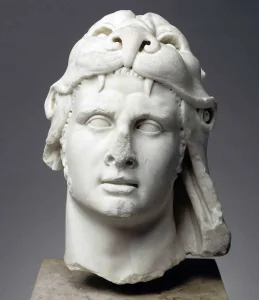
Portrait of Mithridates VI Eupator, King of Pontus, as Herakles, marble copy of a bronze original, ca. 1st century CE. Source Musee du Louvre
The Pontic Kingdom was a melting pot, combining Persian and Greek cultural influences. It had been originally founded in 281 BCE by Mithridates I Ktistes (“the Builder”), who was of Persian origins like many of the inhabitants of the territory he now claimed as his own. However, much of the territory that would be integrated into the kingdom was decidedly Greek; Hellenic colonists had been exploring and settling along the coast of the Black Sea for quite some time.
In effect, Mithridates’ kingdom was one of several in Asia Minor that emerged from weakening Seleucid control in the region. The kingdom would be ruled by this hereditary dynasty for its entire duration, with security helped by marriage alliances with the neighboring Seleucids. Territory was added over time, with Mithridates VI Eupator (132-63 BCE) adding Colchis (roughly, modern Georgia), and the Bosporan Kingdom (the modern Crimea), expanding the kingdom to its greatest territorial extent.
Now a significant power in the eastern Mediterranean, the ambitious Mithridates VI sought to consolidate his control in the region. This put the Kingdom of Pontus on a collision course with the ancient Mediterranean’s other principal power, the Roman Republic…
Chaos and Cappadocia: Prelude to the First Mithridatic War
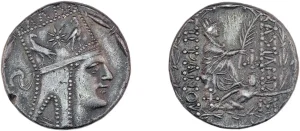
Silver coin of Tigranes the Great, King of Armenia, minted at Antiochia ad Orontem, 1st century BCE. Source British Museum
Get the latest articles delivered to your inbox
Sign up to our Free Weekly Newsletter
Join!
As Mithridates VI sought to consolidate his power in Asia Minor, his territorial aspirations brought him into direct confrontation with regions that were allies with Rome. Many of the territories that neighbored the Pontic Kingdom were actually client states, ruled by kings whose authority derived from Roman support. If the Romans had an aversion to kingly rule themselves, they certainly did not shy away from the role of kingmaker. The spark for war came with Mithridates’ seizure of Cappadocia from Nicomedes III of Bithynia and his replacement of the region’s ruler with his son-in-law, Tigranes the Great, king of Armenia.
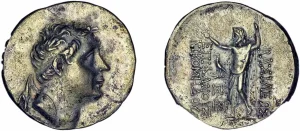
Silver tetradrachm of Nicomedes III, with obverse portrait of his father (Nicomedes II) and reverse depiction of Zeus Stratios, minted in Bithynia, 1st century BCE. Source British Museum
At the same time as the Republic was becoming increasingly invested in the geopolitics of the eastern Mediterranean, the Romans were also fighting the so-called Social War on the Italian peninsula. Aggrieved by various Roman abuses, former Italian allies of Rome (the socii) rebelled in 91 BCE. Despite the severity of the situation, Rome nevertheless dispatched agents to the east to attempt to bring Mithridates to heel. They did so in a remarkable way. To secure Roman support for his restoration, Nicomedes had taken out huge loans. Now, with the pressure to repay his debts, Nicomedes was pressured by the Romans to invade Pontic territory.
The historian, Appian, describes how Mithridates used the Roman peer pressure of Nicomedes to his advantage. Pressed into invading Mithridates’ kingdom, Nicomedes and his forces sacked as far as the city of Amastris. The lack of opposition was contrived by the Pontic king, however, who knew full well that the invasion of his kingdom gave him ample justification for declaring war. In the summer of 89 BCE, Mithridates ordered his son, Ariarathes, to retake Cappadocia. The First Mithridatic War had begun.
Pontic Power: The Massacre of the Romans
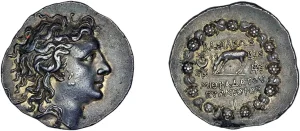
Tetradrachm of Mithridates VI Eupator with obverse portrait of the king, minted in Pontus, 76-75 BCE. Source British Museum
The Pontic re-occupation of Cappadocia was perceived by the Roman Senate as the final straw: Mithridates must be removed from power to ensure Rome’s pre-eminence in Asia. Fortunately, by this time, the Social War was drawing to a close, so the Republic had a ready supply of battle-hardened troops to release into the eastern theatre. Unfortunately, before they could arrive, Mithridates’ forces marched quickly. First, Nicomedes was defeated, and then a Roman force led by Manius Aquilius was smashed in Bithynia, prompting another Roman force to withdraw to Greece. Roman rule in Asia had collapsed with remarkable speed, and Mithridates caroused in his victories: taxes were remitted, and the structures of Roman rule were replaced by Satraps to oversee the conquered territories.

Idealized view of the Acropolis and the Areopagus in Athens, Leo von Klenze, 1846. Source Die Pinakotheken
It was around this time that Mithridates was offered some advice by a Greek philosopher at his court. Metrodoros of Skepsis, known to be a fervent hater of the Romans, suggested that the surest way for the Pontic king to bind the communities under his control to his cause was to massacre — without discrimination of age or sex — the Romans currently residing in Asia. The mass killings were duly coordinated and, in the spring of 88 BCE, tens of thousands of Romans in Asia were slaughtered on the orders of the Pontic king. The suggestion of Plutarch that one hundred and fifty thousand Romans were slaughtered is double the figure offered by Appian’s history and likely hyperbolic, but nevertheless conveys the scale of the bloodletting. One of the more evocative episodes in Appian’s history describes how desperate fugitives tried to seek shelter in the Temple of Artemis at Ephesus, but they found no sanctuary from the bloodletting in the wondrous structure…
Regardless of the exact figure killed in the Asiatic Vespers, as the massacres are sometimes called, Mithridates was now in a position to consolidate his control of Asia Minor and establish authority in Greece. Most notably, he installed Aristion as a tyrant in the city of Athens, symbolizing his domination of the region.
Rome’s Lucky Dictator: Sulla Marches East

Portrait of Lucius Cornelius Sulla, Pieter Bodart, from Henricus Spoor, Facissae Utriusque Antiquitatis, ca. 1707. Source British Museum
Rome’s fight for vengeance against Mithridates was led by Lucius Cornelius Sulla. The rival of Marius and the future dictator arrived in western Greece with his legions in 87 BCE. The arrival of Roman forces quickly convinced a number of Greek poleis that they should reconsider where their allegiances lay: Thebes, along with most of the Peloponnese, quickly pledged fealty to Rome once more. Athens, however, continued to resist. A bitter siege in the winter of 87-6 BCE followed, and the city fell to Sulla’s forces. The final pockets of resistance were crushed in pitched battles at Chaeronea and Orchomenus. Victorious, Sulla could now claim to have restored Greece to Roman rule.

Portrait of Mithridates VI Eupator, Pieter Bodart, from Henricus Spoor, Facissae Utriusque Antiquitatis, ca. 1707. Source British Museum
Fortunately, for the defeated Pontic king, however, the fractious nature of Roman politics in the last decades of the Republic provided an escape route. Although cities in Asia Minor were beginning to rebel against Mithridates, the Romans could not coordinate a unified attempt at capturing their enemy. By 85 BCE, a meeting was arranged between Sulla and Mithridates at Dardanus. Mithridates accepted the terms offered to him: the return of captured territory in Asia, Bithynia, and Cappadocia, a significant payment, and a loan of 70 ships; crucially, this last term provided the means for Sulla to sail west, back to Rome, where he could confront the faction that opposed him. Perhaps this is why King Mithridates was allowed to retain control of his own kingdom, despite the huge numbers of Roman dead his war had caused…
Renewed Conflict: The Second Mithridatic War
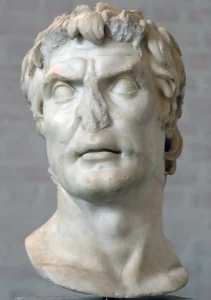
Bust identified as Sulla, 1st century BCE. Source Wikimedia Commons
The First Mithridatic War was ultimately brought to a hasty conclusion, in part due to the instability that was again wracking the Republic and the Italian Peninsula. While Sulla sailed back to confront his rivals, Marius chief amongst them, he left behind in Asia his legate, Lucius Licinus Murena, who was given the task of commanding two legions to assert Roman dominance in the recently reclaimed region. Peace did not prevail for long. In 83 BCE, Murena struck out against Mithridates, attacking the town of Comana. The reason for Murena’s aggression, according to Appian, was the suspicion that Mithridates was raising the forces to once again challenge Rome. In fact, it appears that Mithridates’ objective was to quash a rebellion elsewhere in his kingdom; Murena, it seems, was just ambitious and had designs on being awarded a Triumph if he could defeat Mithridates. Mithridates, reluctant to engage in another costly war, did not rise to Murena’s provocations and instead turned to diplomacy.
Although senatorial dispatches ordered Murena not to hassle Mithridates, these appear to have fallen on deaf ears. Further incursions by the legate prompted Mithridates, finally, to retaliate. This was bad news for Murena, who was promptly defeated by a force led by Gordius, Mithridates’ commander. Murena’s flight also had the disastrous effect of prompting other cities in Asia Minor to switch allegiances once again. Despite this, when Sulla heard of the conflict, he was reluctant to pursue a war against Mithridates: the Pontic king, after all, had not broken the treaty. In the end, Murena was recalled to Rome by Sulla, ending the Second Mithridatic War, but not the tensions between Rome and the Kingdom of Pontus…
Battling for Bithynia: Lucullus and the Third Mithridatic War

The Wretchedness of Wealth, depicting Lucullus second from left, Philips Galle after Maarten van Heemskerck, 1563. Source British Museum
In the years following Murena’s recall, Rome’s prominence in the eastern Mediterranean continued to grow. Not least, the Republic’s efforts to rid the Mediterranean of pirates brought the coastal regions of Lycia and Pamphylia under their sway. At the same time, Mithridates had sought to bolster his alliances. He joined with the Cilician pirates and, more significantly, with Quintus Sertorius, in Spain. In 75 BCE, the tensions boiled over as the political stability of Asia was again jeopardized. The scene was set for the decisive showdown between Rome and Pontus.
This time, the catalyst was the death of Nicomedes IV, the ruler of Bithynia. Like other kings in the region, Nicomedes had left his kingdom to Rome in the absence of any heirs: most famously, Attalus III, the ruler of Pergamon, had done exactly this in 133 BCE. As Rome mobilized its forces, Mithridates struck out an,d in 73 BCE, invaded Bithynia. The early exchanges of the war were indecisive: although Mithridates’ fleet defeated the Romans at Chalcedon, the Roman commander, Lucius Licinius Lucullus, defeated the Pontic forces in battle and forced them to retreat.
In 72 BCE, the tide of war turned decisively in the Roman’s favor as Lucullus invaded Galatia and into Pontic territory. Although Pontic cities were sacked by the advancing Romans, Mithridates was reluctant to engage in a pitched battle. Instead, he attempted a fighting retreat. While heading for Armenia, he ordered his cavalry to cut the Roman supply lines in Cappadocia. The cavalry was defeated and, now without his mobile forces to protect the retreating armies, the withdrawing forces of Mithridates were routed. The king himself fled to Armenia.
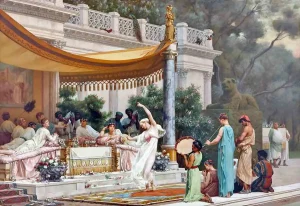
A Summer Repast at the House of Lucullus, Gustave Boulanger, 1877. Source Wikimedia Commons
Lucullus was not to be put off the chase, however. In 69 BCE, he invaded Armenian territory. His aim was to capture the city of Tigranocerta, the capital of Tigranes’ kingdom. Although he was confronted by a vast force of heavily armored cataphracts at the Battle of Tigranocerta, Lucullus was victorious. Lucullus demolished the city and reorganized the kingdom, returning territory to Seleucid control. Mithridates himself, however, had still avoided capture. In 67 BCE, he returned to Pontus where he defeated a large Roman army at Zela. As for the now fabulously wealthy Lucullus, his consular authority expired and he was replaced in the field by two new leaders, Marcius Rex and Acilius Glabrio. But, while Mithridates and Tigranes quickly strove to recover lost territory in Pontus and Cappadocia, another Roman general was heading their way…
Pompey the Great vs the Pontic Kingdom
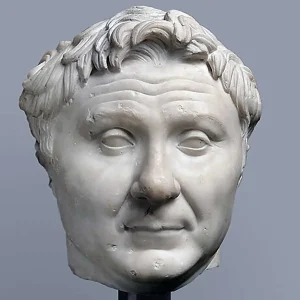
Portrait of Pompey the Great, 30-50 CE, New Carlsberg Glyptotek, Copenhagen. Source The Metropolitan Museum of Art
In 67 BCE, the Senate gave an extraordinary and far-reaching range of powers to a man who, only a few years previously, had won for himself the rather alarming nickname, adulescentulus carnifex (“the teenage butcher”). The man was Pompey the Great, and he had been given extensive proconsular imperium to definitively handle Rome’s pirate problem in the eastern Mediterranean. This also brought him into Mithridates’ sphere of influence. With the pirates defeated by 66 BCE, Pompey was given the authority to resolve Rome’s difficulties in Pontus (this was called the Lex Manilia).
Reluctant again to be drawn into a decisive pitched battle, Mithridates attempted to lure Pompey’s forces into the interior of the Pontic Kingdom, from where he could harass and harangue the Roman supply lines. The approach failed though, and Pompey’s strategizing allowed him to score a significant victory at the Battle of the Lycus River in 66 BCE. In the aftermath, Pompey launched a campaign against Tigranes in Armenia, shattering the power of Mithridates’ ally against Rome. Tigranes sued for peace and became an allied client state of the Republic. Perhaps surprisingly, Tigranes was allowed to remain as king. This may have been expediency on Pompey’s part, so as not to destabilize the region further, and allowing him to focus his efforts solely on Mithridates.
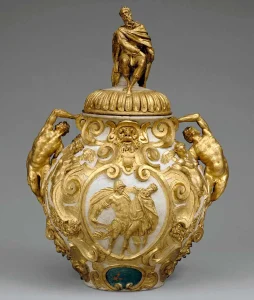
Drug Jar for Mithridate, attributed to Annibale Fontana, ca. 1580. Source Getty Museum Collection
Further battles between Pompey and the Pontic forces (and their Iberian allies) were waged in the year that followed. By 65 BCE, another defeat compelled Mithridates to retreat to the Crimea. There, on the very fringes of his kingdom, he tried to raise an army to confront the Romans once again. This time, he was unsuccessful; increasingly desperate and isolated from former allies, Mithridates retreated to the city of Panticapeaum. Now, even his sons turned against him, and the dynasty began to disintegrate. First, the elder son, Machares, was unwilling to come to his father’s aid; he was promptly murdered. But, the younger son – Pharnaces II – rebelled against his father, finding much support and popularity from the Pontic populace, wearied after so much war.
The familial treachery destroyed Mithridates’ confidence and shattered any vestigial illusion of authority. The king decided that he would have to commit suicide. Even this was botched, however, as the once mighty king’s life ended in farce. As described by Appian, having for so long been paranoid of poisoners trying to take his life, Mithridates had built up an immunity to various toxins by ingesting small doses. The ploy worked so well, that Mithridates attempts at suicide failed! Left with no alternative, Mithridates ordered his bodyguard, a certain Bituitius, to kill him. With the death of the king, the third and final Mithridatic war was brought to an end.
The End of the Mithridatic Wars: Roman Triumphs

The Triumph of Pompey, Gabriel de Saint-Aubin, 1765. Source Metropolitan Museum of Art
After Mithridates’ death in 63 BCE, the territory of the former kingdom was annexed by the Romans. It was included within the empire as part of the province of Bithynia et Pontus. It was this province that, a century or so later, would be governed by Pliny the Younger (and the subject of many of his letters to the emperor Trajan).
As for Pompey, the successes in the east, including his victory in the Third Mithridatic War, would be celebrated by one of the Republic’s most famous and spectacular celebrations: the third of his three triumphs, in 61 BCE. This was a celebration of military prowess, conquered territories, and pillaged loot so exorbitant that it took two whole days to complete! While his defeat of Mithridates cemented Rome’s control of the eastern Mediterranean, the wealth and prestige Pompey won fuelled the deepening political tensions in the Republic. With so few enemies left to fight, the Romans would soon turn on each other…